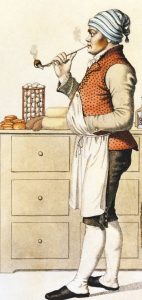 The Scottish surgeon Archibald Blacklock is chiefly remembered today for the events of the night of March 31st, 1834, when he was one of a small group who entered the family mausoleum of Robert Burns in order to make a plaster cast of the poet’s skull.
The Scottish surgeon Archibald Blacklock is chiefly remembered today for the events of the night of March 31st, 1834, when he was one of a small group who entered the family mausoleum of Robert Burns in order to make a plaster cast of the poet’s skull.
Blacklock was an enthusiastic proponent of the pseudoscience of phrenology, the … Read more







